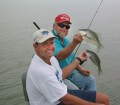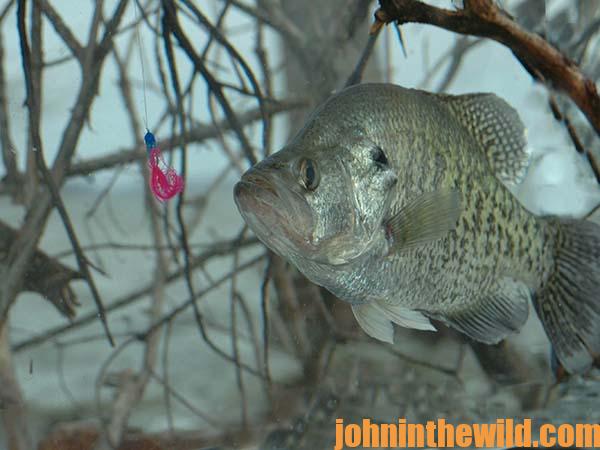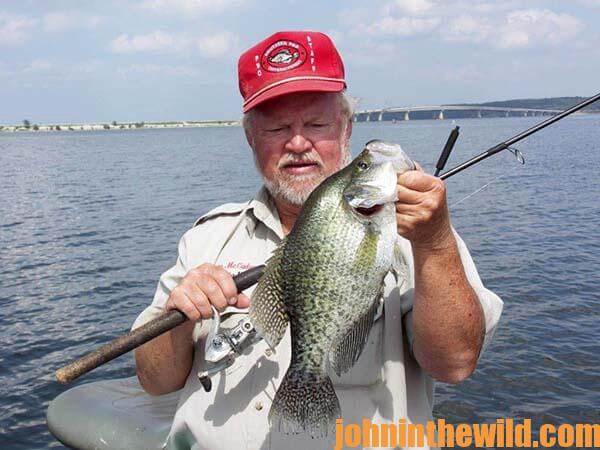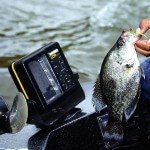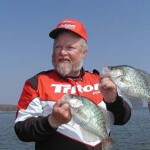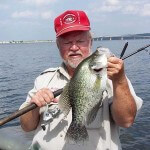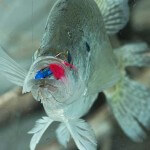John’s Note: 2014 is Steve McCadams’ 40th year of guiding crappie fishermen on Kentucky Lake. He also fished crappie tournaments for 10 years, and at one time he was part owner of Crappie USA. “I guess you could call me a crappie farmer, because I put out a lot of crappie cover and harvest a lot of crappie,” McCadams says. Except when he’s guiding or hunting ducks, McCadams guides crappie fishermen and catches crappie every day of the year. The secret for finding and catching crappie is to know where the crappie live and build homes for crappie. “I guide for crappie 9-10 months out of the year on Kentucky Lake, and we’ve never struck out,” McCadams reports. He only may catch 1-10 crappie, when he’s fishing an hour or two on the lake, because of high winds, snow, thunder or lightning. With two clients in the boat, McCadams averages keeping 40-45 crappie per day. On Kentucky Lake where he primarily fishes, anglers only can keep crappie 10-inches long or longer. However, on an average day, his clients may catch 100 crappie and release the undersized ones.
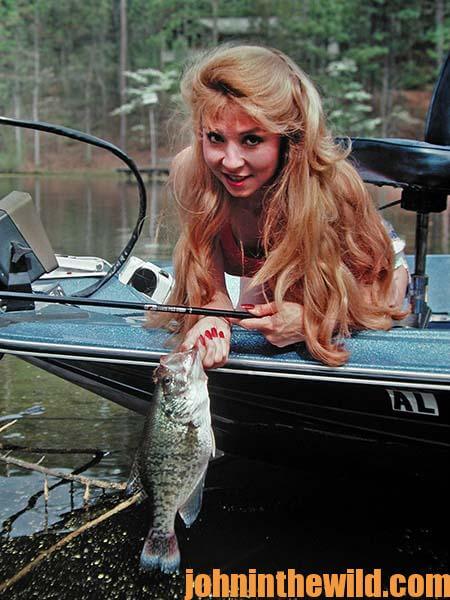 I put out a combination of several different types of brush shelter – both willows and river birch – for crappie each year.
I put out a combination of several different types of brush shelter – both willows and river birch – for crappie each year.
Occasionally, I’ll put out other types of treetops. I like these two types of treetops for building brush shelters for crappie, because I usually can get my hooks out of these treetops easier than with other types of trees. A lot of people sink cedar trees, and cedar trees are better than no cover. However, I’ve found that cedar trees are much more difficult to get a hook out of than willow or river birch.
How to Place Stake Beds:
Mostly, I put out stake beds. I drive wooden stakes – usually 1x1s or 2x2s – into the bottom of the lake. Often, they’re called tomato stakes, because this type of wooden stake is used to hold up tomato bushes. These wooden stakes are 4- to 6-feet long, and I drive them into the lake bed about 12- to 18-inches deep. I want the stake beds to stick up 3- to 4-feet off the bottom. I use a 12- to 14-foot manual-power stake driver made of either PVC pipe or light aluminum. Then, I use a small handle so I can drive the stakes down into deep water.
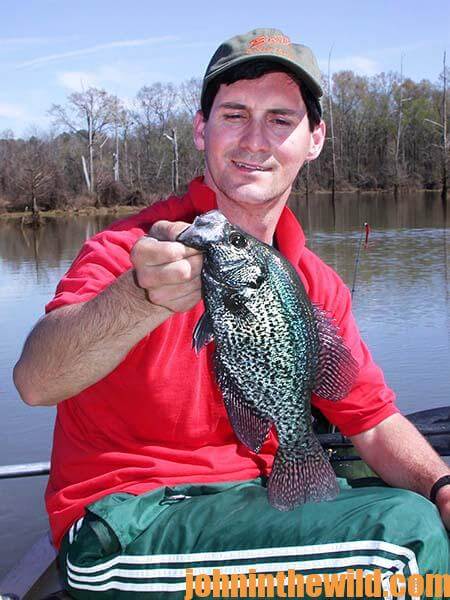 I also like to plant wooden shipping pallets – either 4×4 or 4×6 pallets. I put a concrete block in the middle of the pallet. I nail my stakes around the sides and/or attach them to the middles of the pallets. On a wooden pallet, I like my stakes to be about 6- to 8-inches apart, and I try to put 40 to 50 stakes on each wooden pallet – about the same number of stakes that I drive into the bottom, when I’m using my homemade pile driver to create a stake bed.
I also like to plant wooden shipping pallets – either 4×4 or 4×6 pallets. I put a concrete block in the middle of the pallet. I nail my stakes around the sides and/or attach them to the middles of the pallets. On a wooden pallet, I like my stakes to be about 6- to 8-inches apart, and I try to put 40 to 50 stakes on each wooden pallet – about the same number of stakes that I drive into the bottom, when I’m using my homemade pile driver to create a stake bed.
However, stake beds don’t last forever. I have a procedure I call, “Tending to my garden.” When I create a stake bed, I log where each stake bed is located with GPS coordinates. So, when I refurbish the stake beds, I easily can locate them. About every 3 to 4 years, I return to the sites where I’ve put stake beds and I’ll add new brush or stakes to each stake bed. If a stake bed hasn’t been producing very well for 3 or 4 years, instead of refurbishing that stake bed, I’ll create a new stake bed somewhere else. In an average year, I’ll either refurbish 30 stake beds or put out up to 30 new stake beds. I tend to my garden in this way every year. If I don’t keep constantly trying to improve some portion of my crappie farm every year, I can’t expect to harvest a crop of crappie every day I fish.
When to Build and Refurbish Stake Beds:
Refurbishing and building stake beds can be done at any time of the year, but my favorite time to take care of and create new stake beds is in February and early March. Most of the time Kentucky Lake (the lake I guide on) has a 5-foot fluctuation level between summer and winter pool. The lake is usually at its lowest pool, and the fewest number of fishermen are out on the lake in the winter. If you build your stake beds when the lake is at its lowest level, your stake beds always will be underwater where other fishermen can’t see them. Here’s another reason that I want my stake beds out of sight. If we have an extremely-cold winter like we’ve had the last couple of years, the tops of your stakes can ice-up, causing them to be prised out of the water, or your pallets may turn over sideways. If you’re in a shallow pond or lake, where you can control the fishing pressure, there’s nothing wrong with having some of your stake beds visible from the surface.
Steve McCadams Professional Guide Service – stevemc@charter.net – (731) 642-0360
To learn much more about crappie fishing, get John E. Phillips’ Kindle eBooks and some print books, “Crappie: How to Catch Them Fall & Winter,” “Crappie: How to Catch Them Spring and Summer,” “Catch Cold Water Crappie Now,” and “Reelfoot Lake: How to Fish for Crappie, Bass, Bluegills and Catfish & Hunt for Ducks.” Click here to get these books.
Share this page with a friend!
About the Author
John Phillips, winner of the 2012 Homer Circle Fishing Award for outstanding fishing writer by the American Sportfishing Association (ASA) and the Professional Outdoor Media Association (POMA), the 2008 Crossbow Communicator of the year and the 2007 Legendary Communicator chosen for induction into the National Fresh Water Hall of Fame, is a freelance writer (over 6,000 magazine articles for about 100 magazines and several thousand newspaper columns published), magazine editor, photographer for print media as well as industry catalogues (over 25,000 photos published), lecturer, outdoor consultant, marketing consultant, book author and daily internet content provider with an overview of the outdoors.


